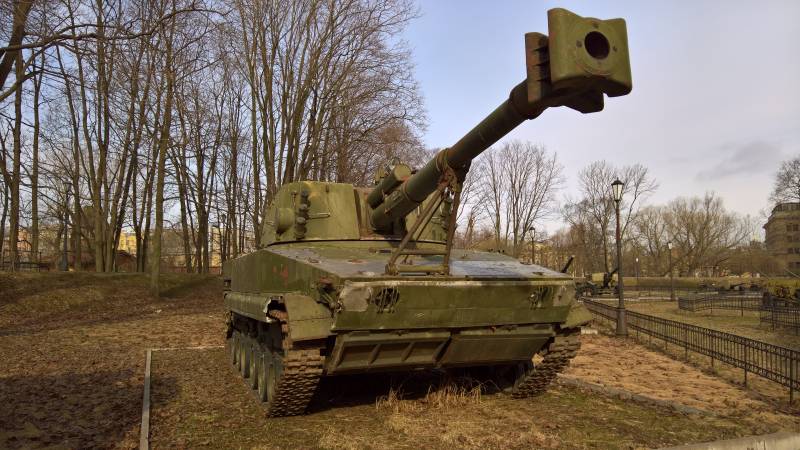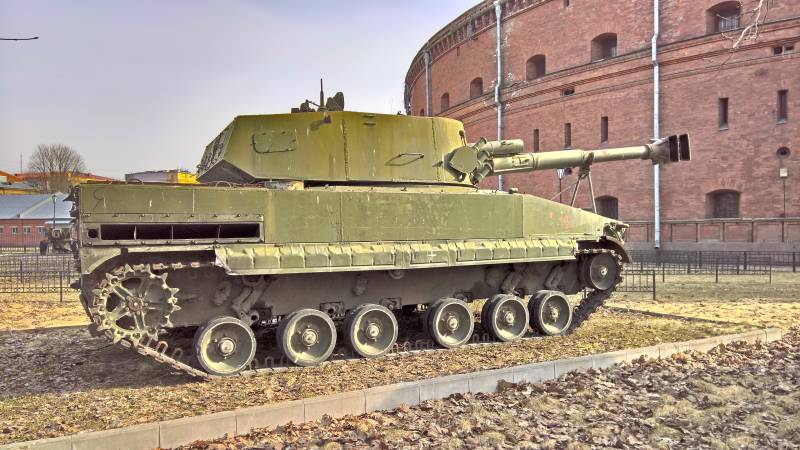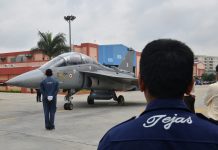Russia has claimed that it has begun the development of a 152mm caliber floating howitzer, with insights gleaned from its use of artillery in a special military operation in Ukraine.
Roman Khromov, the deputy executive director for state defense orders and military-technical cooperation at Kurganmashzavod, a subsidiary of the Rostec state corporation, disclosed this information to RIA Novosti.
The howitzer won’t be constructed from the ground up; instead, it will be based on a 152mm amphibious howitzer originally developed by the USSR.
Back in the 1980s, the USSR created a prototype of this amphibious howitzer, which was mounted on the BMP-3 chassis, and this project was known as “Pat-S.”
Khromov mentioned that the Pat-S project revolves around a 152mm caliber howitzer that offers both substantial firepower and a lightweight design.

He added that, upon examining the conduct of combat operations in the NVO zone and the logistical movements of equipment during these hostilities, it becomes clear that a lightweight vehicle must be equipped with a 152mm caliber howitzer.
However, due to the machine’s origin during the USSR era and its tailored design based on specific customer requirements, there’s a pressing need for updates, notably in improving the fire control system.
Khromov also noted that the Pat-S project’s preliminary efforts are already in progress. This involves gathering and scrutinizing information to prepare a draft set of specifications.
He highlighted that the production of the “Pat-S” was previously halted due to constraints imposed by the treaty on the reduction of conventional weapons in Europe. During that period, the development of several promising machinery, including this weapon system, was curtailed.
Nevertheless, the company’s representative did not specify when the weapon system could be deployed in battlefield scenarios. Additionally, no information was given regarding the duration required to modify and produce this weapon system.
The unique aspect of employing cannon artillery in the Ukraine war involves executing long-range firing from concealed positions, followed by a rapid repositioning to evade potential retaliatory fire.
Khromov noted that the Ministry of Defense had conveyed specific requirements to the company, prompting an evaluation of the feasibility of implementing these tactics using the existing scientific and technical groundwork related to the Pat-S project.
The company also carried out a similar review of other research and development initiatives and the production of similar machinery that it is currently engaged in.
2S18 Pat-S 152mm Self-Propelled Howitzer
The 2S18 Pat-S is an experimental self-propelled artillery unit with a 152mm caliber from the 1980s in the Soviet Union and built upon the BMP-3 chassis. Information from open sources suggests that this vehicle was not mass-produced, with only one prototype ever created.
According to the Russian media, the “Pat-S” is the world’s first large-caliber howitzer capable of overcoming water obstacles afloat under its power.
In comparison, the 2S1 “Carnation” self-propelled guns are also amphibious but are medium calibers with a 122-millimeter caliber.
To enhance its self-defense capabilities, the 2S18 Pat-S featured a PKM machine gun positioned on a turret adjacent to one of the tower hatches, including smoke grenade launchers.
Moreover, the crew members were armed with personal armaments, including machine guns and grenades, to bolster their self-protection measures following deployment.

This design resulted in a relatively compact and lightweight self-propelled artillery platform that could be easily transported by existing military aircraft and potentially dropped by parachutes.
While the weight of the 2S18 self-propelled howitzer had been reduced, it maintained its firepower capability and remained fully compatible with all 152mm caliber shells.
Meanwhile, the resurgence of development for the self-propelled artillery unit 2S18 Pat-S was first reported in May. It is anticipated that the Pat-S, in its updated form, will find a valuable role within the current military structure.
In the early 1980s, the Soviet Union embarked on the 2S18 Pat-S project in response to evolving NATO standards in self-propelled artillery. The objective was to strike a balance between firepower and reduced size and weight, aiming for innovation while maintaining practicality.
Thus, the Russian defense company Kurganmashzavod constructed a prototype of this machine, which underwent at least a portion of the testing phase.
However, at that juncture, the decision was made by the customer to discontinue further development. The exact reasons behind this decision remain undisclosed.
- Contact the author at ashishmichel(at)gmail.com
- Follow EurAsian Times on Google News




